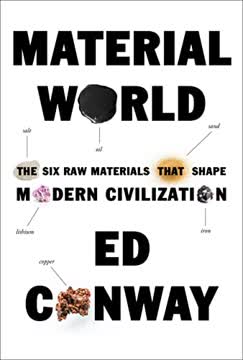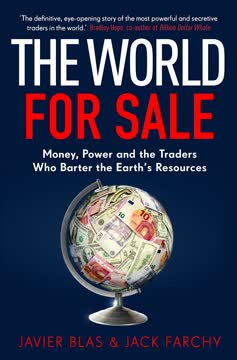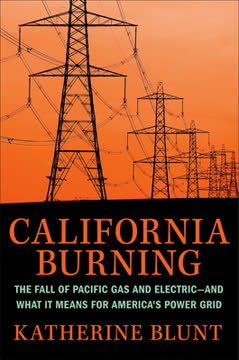Key Takeaways
1. America's Shale Revolution Reshaped Global Energy and Geopolitics
Together, shale oil and shale gas have proven to be the biggest energy innovations so far in the twenty-first century.
An unexpected transformation. Driven by stubborn ingenuity and technological advances like hydraulic fracturing ("fracking") and horizontal drilling, the U.S. unlocked vast reserves previously thought impossible to produce commercially. This unconventional revolution began with natural gas in the Barnett Shale and expanded dramatically to oil in formations like the Bakken and Permian Basin. The U.S. surged past Russia and Saudi Arabia to become the world's largest producer of both oil and gas.
Economic and trade impacts. The shale boom fueled U.S. economic growth, creating millions of jobs across diverse sectors and states, even in those banning drilling. It dramatically reduced U.S. dependence on energy imports, slashing the trade deficit by hundreds of billions of dollars annually. Abundant, low-cost natural gas revitalized American manufacturing, attracting significant domestic and foreign investment in energy-intensive industries like chemicals.
Geopolitical rebalancing. This newfound energy abundance provided the U.S. with greater energy security and flexibility in foreign policy, reducing perceived vulnerability to Middle East disruptions. U.S. LNG exports diversified global gas markets, lessening Europe's reliance on Russia. While shale faced economic challenges from price volatility and investor demands for returns, and was severely impacted by the 2020 pandemic, it fundamentally altered the global energy map and America's role within it.
2. Russia Leverages Energy to Reassert Great Power Status
Oil is no doubt one of the most important elements in world politics, in the world economy.
Economic foundation. Oil and gas exports provide the financial backbone for the Russian state, funding its budget, military, and efforts to restore global influence. After the collapse of the Soviet Union, the rebound in oil prices and production under Vladimir Putin fueled Russia's economic recovery and resurgence on the world stage. This reliance, however, also exposes Russia to price volatility and external pressure.
State control and strategic projects. Putin consolidated state control over the energy sector, notably through Gazprom and Rosneft, viewing these companies as instruments of national power. Russia has pursued strategic pipeline projects like Nord Stream under the Baltic Sea to bypass transit countries like Ukraine, aiming to enhance energy security and political leverage over Europe. While Europe seeks diversification, Russia remains a major supplier, adapting to market changes like the rise of global LNG.
Pivot to the East. Facing estrangement from the West, Russia has deepened energy ties with China, building major oil and gas pipelines like the Power of Siberia. This "pivot to the east" provides Russia with new markets and aligns with a shared geopolitical vision opposing perceived U.S. hegemony. Despite Western sanctions targeting its energy sector, Russia has shown resilience, developing domestic capabilities and finding new partners, particularly in Asia.
3. China's Economic Rise Fuels Global Ambition and Strategic Rivalry
China has become what Britain had been during the Industrial Revolution—the manufacturing 'workshop of the world.'
Economic transformation and energy needs. China's extraordinary economic growth has made it a global manufacturing powerhouse and the world's largest energy consumer. This growth requires vast energy imports, particularly oil (75% imported) and increasingly natural gas, creating perceived vulnerabilities. Beijing prioritizes energy security and diversification to fuel continued development and lift millions out of poverty.
Strategic geography and claims. China's energy security concerns are intertwined with its assertive claims in the South China Sea, a critical waterway for global trade and energy flows. The 9-Dash Line map, rooted in historical claims, asserts sovereignty over islands and waters disputed by neighboring countries. China's rapid construction of artificial islands and militarization of features aim to control these vital sea lanes, raising tensions with regional states and the U.S.
Redrawing the global map. Beyond the South China Sea, China projects its economic and political power globally through initiatives like the Belt and Road Initiative (BRI). BRI aims to connect Eurasia and beyond through massive infrastructure and energy investments, creating new markets and securing access to resources. This strategy, coupled with military modernization and strategic partnerships (like with Russia), positions China as a major rival to the U.S., contributing to a new era of great power competition and a fragmenting global order.
4. The Middle East Remains a Crucible of Contested Maps and Power Struggles
ISIS’s ambition was to replace borders and nation-states with a caliphate, an empire based not on national sovereignty but on the authority of Islam and the strictures of the seventh century—a caliphate that would take on the world in a global jihad.
Legacy of imposed borders. The modern map of the Middle East, largely drawn by European powers after the collapse of the Ottoman Empire (symbolized by Sykes-Picot), created nation-states that often disregarded ethnic and sectarian lines. This artificial structure has been challenged by various forces seeking to redraw or erase these borders.
Forces of disruption. Arab nationalism (Nasser), Islamic revolution (Khomeini), and jihadist movements (Al Qaeda, ISIS) have all sought to overturn the existing state system. ISIS, in particular, aimed to establish a borderless caliphate through brutal conquest, temporarily controlling vast territory in Iraq and Syria and highlighting the fragility of state authority in the region.
Regional cold war. The most significant ongoing struggle is the rivalry between Sunni Saudi Arabia and Shia Iran for regional predominance. This conflict plays out through proxy wars in countries like Yemen, Syria, and Iraq, fueled by religious, ideological, and national interests. Oil remains central, both as a source of wealth funding these rivalries and as a potential target, as demonstrated by attacks on Saudi oil infrastructure.
5. A New Mobility Revolution Challenges Oil's Dominance in Transport
The 'triad'—the convergence of electric vehicles, ride hailing, and self-driving cars—is far from sure.
Electric vehicle ascent. Driven by climate concerns, government regulations (emissions standards, ZEV mandates), subsidies, and falling battery costs, electric vehicles (EVs) are gaining traction globally. Automakers are investing billions to electrify their fleets, particularly in response to strict European CO2 targets and China's push for New Energy Vehicles. While still a small percentage of the global fleet, EVs represent a significant challenge to oil's century-long dominance in passenger transport.
Rise of Mobility as a Service (MaaS). Ride-hailing companies like Uber, Lyft, and DiDi have disrupted traditional taxi services and challenged the model of individual car ownership. Using smartphone apps, they connect drivers and passengers, offering "mobility as a service." This model is particularly appealing in dense urban areas and countries with low car ownership rates.
Autonomous vehicle potential. Research and development in self-driving cars (AVs), spurred by defense initiatives and tech giants like Google/Waymo, aim to eliminate the human driver. While facing significant technological, regulatory, and social hurdles, AVs could dramatically lower the cost of ride-hailing services. The convergence of EVs, AVs, and ride-hailing creates the potential for "Auto-Tech" companies and a transformative shift in how people move, impacting car sales, jobs, and urban life.
6. Energy Transition is a Complex, Uneven Global Endeavor
Mapping the path to a lower-carbon world will be a defining challenge in the decades ahead.
Climate imperative. Growing scientific consensus on human-caused climate change, coupled with increasing public alarm and activism, is the primary driver for the "Energy Transition." The Paris Agreement set a global goal to limit warming, relying on voluntary national commitments (NDCs) and fostering a new era of climate politics ("After Paris").
Policy and ambition. Governments, particularly in Europe (EU Green Deal aiming for net zero by 2050) and the U.S. (Green New Deal proposals), are setting ambitious targets and implementing policies to accelerate the shift away from fossil fuels. These include mandates for renewables, incentives for EVs, carbon pricing mechanisms, and directing investment towards "green" technologies.
Challenges and disparities. Despite rapid growth in wind and solar, they remain intermittent and require significant investment in storage and grid modernization. The global energy system is still over 80% reliant on fossil fuels, with massive embedded infrastructure. Energy transition means different things in the developing world, where billions lack access to basic energy and prioritize economic growth and poverty reduction, often relying on coal and natural gas for affordability and reliability. The cost and speed of transition remain major points of contention.
7. The World Order is Fragmenting, Increasing Geopolitical Risk
But the momentum is now going in reverse.
Reversal of globalization. The post-Cold War era of increasing global integration is giving way to fragmentation, driven by rising nationalism, populism, and distrust between nations. Borders are hardening, international cooperation is strained, and global supply chains are being re-evaluated for security and resilience over efficiency.
Great power competition. The most significant driver of this fragmentation is the growing rivalry between the United States and China. This "G2" clash encompasses economic models, technology (high-tech arms race, 5G), military capabilities (South China Sea), and competing visions for world order, leading to a new cold war dynamic. This polarization forces other nations into difficult choices and hampers global economic growth.
Energy in a fractured world. Energy remains central to geopolitics in this new order. The U.S. shale revolution provides a supply cushion, but the "Big Three" (US, Russia, Saudi Arabia) will navigate complex market dynamics and rivalries. Oil and gas are vital for Russia's power projection, China's growth, and the stability of the Middle East. While climate adds a new dimension, geopolitical risks, including conflict over resources and transit routes, will continue to shape the energy map.
Last updated:
FAQ
What is The New Map: Energy, Climate, and the Clash of Nations by Daniel Yergin about?
- Comprehensive energy and geopolitics: The book explores how global energy resources, climate change, and geopolitical rivalries are redrawing the world map in the 21st century.
- Focus on major players: Yergin examines the roles of the U.S., China, Russia, and the Middle East, highlighting how energy innovations and political tensions shape international relations.
- Integration of history and current events: The narrative connects historical milestones with contemporary challenges, such as the shale revolution, the rise of renewables, and the impact of the COVID-19 pandemic on energy markets.
Why should I read The New Map: Energy, Climate, and the Clash of Nations by Daniel Yergin?
- Authoritative energy insight: Daniel Yergin is a renowned energy expert, and his analysis makes complex global energy and geopolitical issues accessible and relevant.
- Understanding global tensions: The book provides a clear lens on the causes and consequences of major power rivalries, such as U.S.-China and Saudi-Iran, through the perspective of energy and strategy.
- Future-oriented perspective: Yergin covers emerging trends like electric vehicles, autonomous driving, and the energy transition, helping readers anticipate future challenges and opportunities.
What are the key takeaways from The New Map: Energy, Climate, and the Clash of Nations by Daniel Yergin?
- Energy transitions are gradual: Despite rapid advances in renewables and electric vehicles, fossil fuels remain dominant, and the shift to new energy systems will take decades.
- Geopolitics remains central: Energy resources continue to influence global power balances, alliances, and conflicts, with the U.S., Russia, China, and the Middle East as pivotal players.
- Technology and business models evolve: Innovations in mobility, such as ride-hailing and autonomous vehicles, are disrupting traditional industries and labor markets.
How did the shale revolution transform America’s energy position according to Daniel Yergin in The New Map?
- Breakthrough in extraction: The shale revolution began with advances in hydraulic fracturing and horizontal drilling, unlocking vast oil and gas resources in the U.S.
- Economic and environmental impact: U.S. natural gas output surged, leading to lower prices, a shift from coal to gas in electricity generation, and a significant drop in CO2 emissions.
- Geopolitical consequences: The U.S. became the world’s top oil and gas producer, reducing energy imports, improving trade balance, and gaining greater foreign policy flexibility.
What are the key geopolitical implications of the shale revolution in The New Map by Daniel Yergin?
- Shift in U.S. influence: Increased energy security has reduced U.S. dependence on Middle Eastern oil and reshaped global energy markets.
- Emerging cold wars: The shale boom challenges Russia’s gas dominance in Europe and affects China’s energy security, fueling new strategic rivalries.
- Global energy rebalancing: The rise of the U.S. as a major exporter has changed OPEC dynamics and influenced relations with allies and competitors worldwide.
How does Daniel Yergin describe Russia’s energy strategy and geopolitical ambitions in The New Map?
- Putin’s energy leverage: Russia uses its vast oil and gas resources as tools of economic strength and geopolitical influence, especially in Europe.
- Geopolitical maneuvers: The annexation of Crimea and conflict in Ukraine intensified tensions, with Western sanctions targeting Russia’s energy sector.
- Pivot to the East: Facing Western isolation, Russia has deepened energy ties with China, exemplified by major gas deals and the Power of Siberia pipeline.
What is the significance of the U.S.-China relationship ("G2") in The New Map by Daniel Yergin?
- Economic interdependence and rivalry: The U.S. and China account for a large share of global GDP and military spending, making their relationship central to global stability.
- Strategic competition: Their rivalry extends to military, economic, and technological domains, especially in the Indo-Pacific and South China Sea.
- Future implications: The evolving dynamic between these powers will shape global economic, security, and technological landscapes for decades.
How does The New Map explain the geopolitical tensions in the South China Sea?
- Territorial disputes: China and several Southeast Asian nations contest sovereignty over islands and maritime rights, with China asserting claims based on historical maps.
- Strategic and economic stakes: The South China Sea is a vital trade route for oil, LNG, and goods, making control over sea lanes crucial for regional security.
- Military and diplomatic clashes: U.S. freedom of navigation operations challenge China’s claims, leading to near collisions and diplomatic standoffs, while ASEAN countries navigate complex alliances.
What role does energy play in China’s global strategy as described in The New Map by Daniel Yergin?
- Heavy energy dependence: China is the world’s largest energy consumer, relying heavily on imported oil and gas, which shapes its strategic priorities.
- Securing supply routes: Control over critical sea lanes like the South China Sea and Malacca Strait is vital for China’s energy security, prompting assertive territorial claims.
- Belt and Road Initiative: China’s global infrastructure push aims to secure energy supplies, open markets, and expand geopolitical influence across Eurasia and beyond.
How does Daniel Yergin describe the energy transition and climate concerns in The New Map?
- Defining the energy transition: The shift from fossil fuels to renewables is a central theme, driven by climate policies and technological advances.
- Challenges of renewables: Solar and wind face issues like intermittency, requiring advances in grid stability and storage, and the transition is uneven across countries.
- Net zero carbon goal: Achieving net zero emissions is a major challenge, reshaping energy markets, policies, and geopolitics, with significant social and economic implications.
What insights does The New Map by Daniel Yergin provide about electric vehicles (EVs) and autonomous cars?
- EVs as a transformative force: The book highlights Tesla’s role in reviving electric cars and the global push toward electrification, especially in China and Europe.
- Adoption challenges: Battery costs, charging infrastructure, and consumer acceptance are key hurdles, with government incentives crucial for market growth.
- Autonomous vehicle revolution: Yergin discusses the development of self-driving technology, its potential to reshape transportation, and the challenges of achieving full automation.
What are the best quotes from The New Map: Energy, Climate, and the Clash of Nations by Daniel Yergin and what do they mean?
- On China’s Belt and Road: Xi Jinping’s poetic reference to the ancient Silk Road underscores China’s ambition to revive its historical centrality in global trade.
- On Saudi Arabia’s transformation: Crown Prince Mohammed bin Salman’s statement, “The era that began in 1979 is over,” signals a break from conservative traditions toward modernization.
- On the electric vehicle revolution: Elon Musk’s remark, “Until today, all electric cars have sucked,” highlights Tesla’s mission to redefine electric mobility and disrupt the auto industry.
Review Summary
The New Map receives mixed reviews. Many praise Yergin's expertise in oil and gas geopolitics, finding the book informative and well-researched. Critics argue it lacks depth on renewable energy and climate change, with some accusing Yergin of bias towards fossil fuels. Readers appreciate the historical context and geopolitical analysis but note the book's U.S.-centric perspective. Some find the writing engaging, while others describe it as disjointed. Overall, it's considered a valuable resource for understanding global energy dynamics, despite its limitations in addressing future challenges.
Similar Books










Download PDF
Download EPUB
.epub digital book format is ideal for reading ebooks on phones, tablets, and e-readers.




